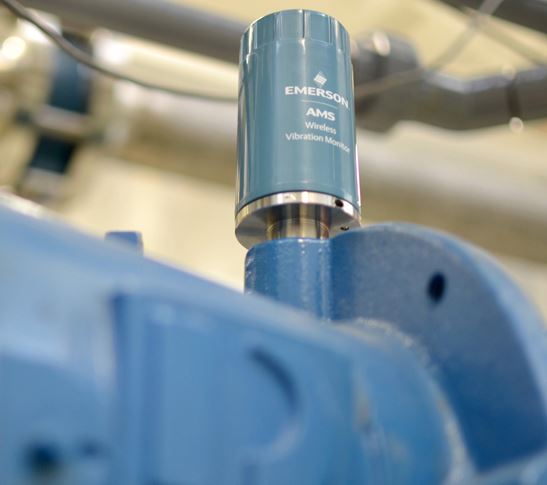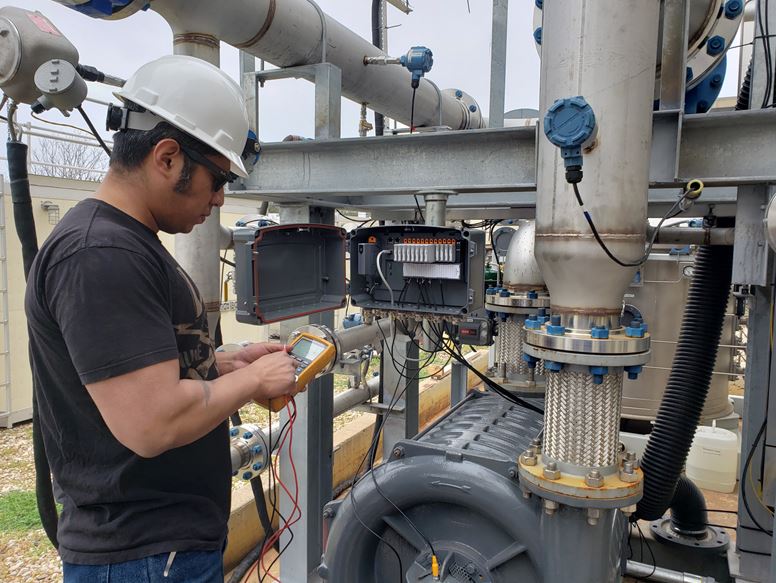
For high-output industries like Food & Beverage, production downtime stemming from equipment failure can be especially costly. Operations producing soft drinks, juices or beer, for instance, may replace maintenance rounds with sensors and automated data collection for more reliable results, or apply monitoring to its critical climate control equipment like cooling towers or ammonia compressors.
A rapid decrease in the cost of sensing equipment has driven many reliability teams to implement even more automated condition monitoring across their facilities. A wide variety of new technologies are both easy to implement and full of robust features to increase visibility of asset health.
There are many ways to plan and implement a condition monitoring program, but across all those options there are a few core strategies that help teams drive the most success. In his recent article in Efficient Plant magazine, Emerson’s Drew Mackley shared three key strategies to help plants deliver the most value from their condition monitoring investments.

Wireless sensors like Emerson’s AMS Wireless Vibration Monitor are cost-effective and easy to install.
Take advantage of automation
The days of manual maintenance rounds are disappearing. Few organizations have the available personnel to commit to spending hours walking around the plant collecting data with handheld analyzers. Now that online monitoring has moved beyond rack-mounted systems, any plant can continuously monitor its assets to free personnel up for more high-value tasks.
The secret lies in smaller, more affordable and intuitive wireless devices. Using wireless sensors plant personnel can install themselves
“the reliability team collects all asset data regularly, consistently, and reliably because exact points of measurement never change due to variation in personnel technique, and collection occurs regardless of personnel availability.”
Position analytics at the edge
The data collected from wireless sensing devices offers little value if the teams do nothing with it. While many organizations are using cloud-based artificial intelligence and machine learning platforms to capitalize on this data, there are solutions closer to home that can help any team quickly and easily make the most of its collected data.
“Forward-thinking organizations are also providing personnel with the tools to make analytics easier and more effective. To do so, reliability teams are turning to sensing devices capable of converting raw data into actionable information at the edge.”
Edge analytics tools are designed to give plant personnel fast access to the information they need to make better decisions.
“Intuitive human machine interfaces are accessible at workstations or can be viewed remotely through secure connections on mobile devices, untethering workers to perform higher-value tasks in the plant, while continuing to monitor asset health.”

Edge devices like AMS Asset Monitor help keep an eye on lower-criticality and stranded assets.
Make the most of what you already have
Teams moving to online condition monitoring are not just throwing away their handheld analyzers. In fact, handheld tools become even more essential to effective predictive maintenance strategies.
“When plant personnel need more information, the portable handheld analyzers now become powerful tools. Because they are no longer occupied with data-collection rounds, technicians can use the analyzers, in tandem with their own senses and experience, to further diagnose the most complex problems. Armed with this extra information, teams can plan and prioritize corrective maintenance based on availability of parts, resources, production schedules, delivery times, and planned outages.”
Do it yourself or enlist expert help
Today’s wireless sensing devices, such as Emerson’s AMS Wireless Vibration Monitor and AMS Asset Monitor are compact and easy to install right at the asset. You can perform installation yourself or reach out to Emerson experts to help you plan, design, and implement your ideal condition monitoring program. And regardless of the route you choose, Emerson wireless sensing devices will be ready to scale alongside your operations to deliver value across the lifecycle.
To learn more about the strategies for better condition monitoring, and to see some examples of wireless sensing in action, check out Drew’s full article at Efficient Plant. And before you go, I’d love to hear more about the strategies you are implementing to drive better reliability across your organization. Feel free to comment below!




